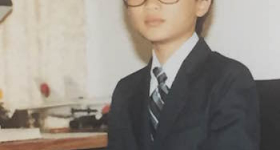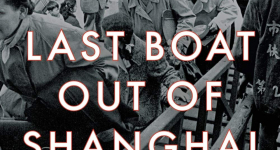Please note: This review is based on, and all quotations come from, an uncorrected NetGalley proof.
In her latest historical novel for young adults, Luck of the Titanic (G.P. Putnam’s Sons Books for Young Readers, May 2021, $18.99), author Stacey Lee sets her story on the doomed maiden voyage of the legendary ship, again examining a time and place where Chinese people were present but have been rendered invisible in books. While most of the Chinese characters spend all their time in third class, the novel’s protagonist, 17-year-old stowaway Valora Luck, moves breezily between first and third class. Val claims a first-class cabin by impersonating a wealthy widow but frequents third class to be with her twin brother, a seaman transferring via the Titanic to a new post. Val pushes him to perform their childhood acrobatics act again. She wants to work with him toward a shared destiny in America, but he loves his life at sea.
When the story begins, Val cannot understand why Jamie is content to be away from her and their act. The two were London street performers as children, earning their family’s bread when other resources were frittered away by their Chinese father, who was whimsical, and as Jamie would insist, often drunk. After their British mother’s early death, Jamie blames their father and leaves home, finding work shoveling coal with a steamship’s boiler room crew. Val stays home and cares for their father, mostly seeing the best in him. Now he is gone, and she wants to be with the only family she has left. She knows that Albert Ankeny Stewart, part-owner of the Ringling Brothers Circus, is aboard the Titanic. If she and Jamie can perform for Stewart during the voyage, maybe they can emigrate to America as circus stars, despite the racist Chinese Exclusion Act.
Between impersonating Mrs. Sloane in first class and searching for Jamie in third class, Val must fool the crew and explore much of the ship. Along the way, readers get to know the characters and the Titanic through Lee’s detailed and often humorous descriptions. The officer who detains Val when she sneaks on board, for example, comes to life through Lee’s playful use of irony. The officer, named Merry, wears a dour expression — perhaps due to the pressure of living up to his name, Val observes. His severe uniform also reinforces this humorous juxtaposition: his tie hangs like a noose from his “severe white collar,” and Val feels judged by his “jury of eight brass buttons” set against a “humorless field of navy.” “The stairway spills onto a wide corridor that runs from port to starboard, such that if the Titanic was a fish, this corridor would be the collar, the choicest piece to eat.”
As Val flits between first and third class, her Mrs. Doubtfire-level costume and accent changes require some suspension of disbelief, but they also provide ample opportunity for Lee to comment on social distinctions between the classes. In first class, Val enjoys complimentary fruit and lemonade and relaxes on a chaise longue, observing or chatting with wealthy fellow passengers. Below decks, Val wears Jamie’s spare “sea slops” and cuts her hair short so she can pass as a boy. She makes her way through crowded hallways and tours a boiler room where the ship’s speed is set by human sweat.
Antagonism toward Chinese people proves to be the one constant across class divides. In first class, Val must wear a veil to hide her Chinese features. In the third-class dining room, she sits at the only table at which Chinese people are seated. She notices that, unlike other tables, this one has no bread. At the substantial risk of making a spectacle of herself, she asks for some. “The diners within earshot spear us with disapproving looks, the kind reserved for sewer rats and unwashed feet,” she reports, and when a basket is finally delivered to the table, it is filled with burnt, rock-hard bread heels.
Romance often propels plot in both Titanic lore and young adult literature, but in Luck of the Titanic, romance is simply part of Val and Jamie’s experiences, not the driver of them. Jamie’s relationship with Charlotte Fine contributes to themes of class and race division, since Charlotte is wealthy and white. Jamie is allowed to be with Charlotte in first class only after she assures the crew that she has contracted him to help care for her anxious little dog. As Val focuses on her plan to convince Jamie to leave the sea and join her in America, she grows to appreciate Jamie’s best friend Bo. Initially pegging him as a show-off, she discovers he is insightful, strong and artistic. When Val asks why he decided to carve a whale for her, he responds, “A whale rules the sea. It goes where it wants without fear. And if troubled, it can become a bird […] beating wings hard enough to stir up the sea. It means being in control of your destiny.”
With Bo’s help, Val comes to understand why Jamie loves his life at sea. The boiler room is “not how I’d expected it to be — dark, grim and indifferent — but rather it’s warm, even thriving.” Jamie is content with his friends, a view of the stars at night and space to breathe. Val is happy for him, but nonetheless her happiness is tempered by ambivalence as she muses that the possibility that she and her brother are on different paths pinches her heart “between two sticky fingers.” Nevertheless, she comes to observe that, “Life is a balancing act, and the better you get at juggling, the better you get at living. But juggling is not an act of holding tight. It’s an act of letting go — of giving the people you love the time and space to find their own orbit.” As the novel progresses toward the Titanic’s fateful night of terror and ice, Val must navigate new ways of looking at her past and her future as she decides which vision she will ultimately embrace.










Comments